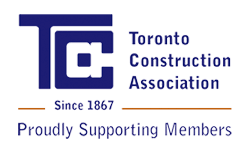Service
With Patterned Concrete® you get all the beauty of slate, flagstone, cobblestone, brick and other textures along with all the structural benefits of concrete. With very little service and maintenance, you will protect your Patterned Concrete® investment and help to maintain its beauty and integrity for many years.
When cleaning your Patterned Concrete®, in most cases a simple hosing is all you need. When required, a non-corrosive cleaning detergent can be used together with scrubbing using a hard bristle broom. If available, a small pressure washer can also be used.
The original Cure & Seal applied at installation helps to maintain moisture in the concrete slab, which is very important with new concrete. It is a very good practice that this original Cure & Seal be as worn as possible before additional re-sealing is performed. It is normal for any sealed concrete surface to not wear consistently as some areas undergo more wear than others, especially with the original Cure and Seal. Simply because the original surface has lost its ‘sheen’, does not mean it is without sealer. Therefore, Patterned Concrete® recommends re-sealing 3 years from installation.
Once Patterned Concrete® has been re-sealed the first time, additional re-sealing is recommended approximately every 3-5 years depending on how the existing sealer wears. Do not over seal your Patterned Concrete®. Many customers will make the mistake of sealing Patterned Concrete® every year. Would you paint your garage doors or stain your fencing every year? Concrete sealers do not wear that quickly and over sealing will create an unnecessary buildup of sealer ultimately leading to surface issues (i.e. embedded moisture, hazy white surface, peeling of sealer, etc.).
Avoid the use of low-quality retail sealers as they more than often have negative reactions especially when mixed with Patterned Concrete® high-quality VOC compliant acrylic sealers. Patterned Concrete® reserves the right to avoid servicing concrete that has been improperly or over sealed by a customer. An improperly or over sealed concrete surface is sometimes beyond the point of repair and may require stripping. Stripping sealer is a very expensive and unnecessary procedure.
Any staining on a sealed surface that cannot be cleaned with standard detergents (i.e. rust, tire marks etc.) can be removed using our ‘Sealer Repair’. Simply apply the Sealer Repair to a white cloth and scrub the stain gently. This product will essentially melt the existing sealer hence removing whatever staining is on the surface. A stubborn stain that requires more aggressive scrubbing may create a bare spot in the sealed surface. In this case, the sealer will need to be ‘brushed’ on this spot only. Sealer and Sealer Repair are available at our office in both large and small quantities.
Vertical stamping that has lost its bond for whatever reason can be re-applied and stamped. (Included in our 5 Year Warranty)




